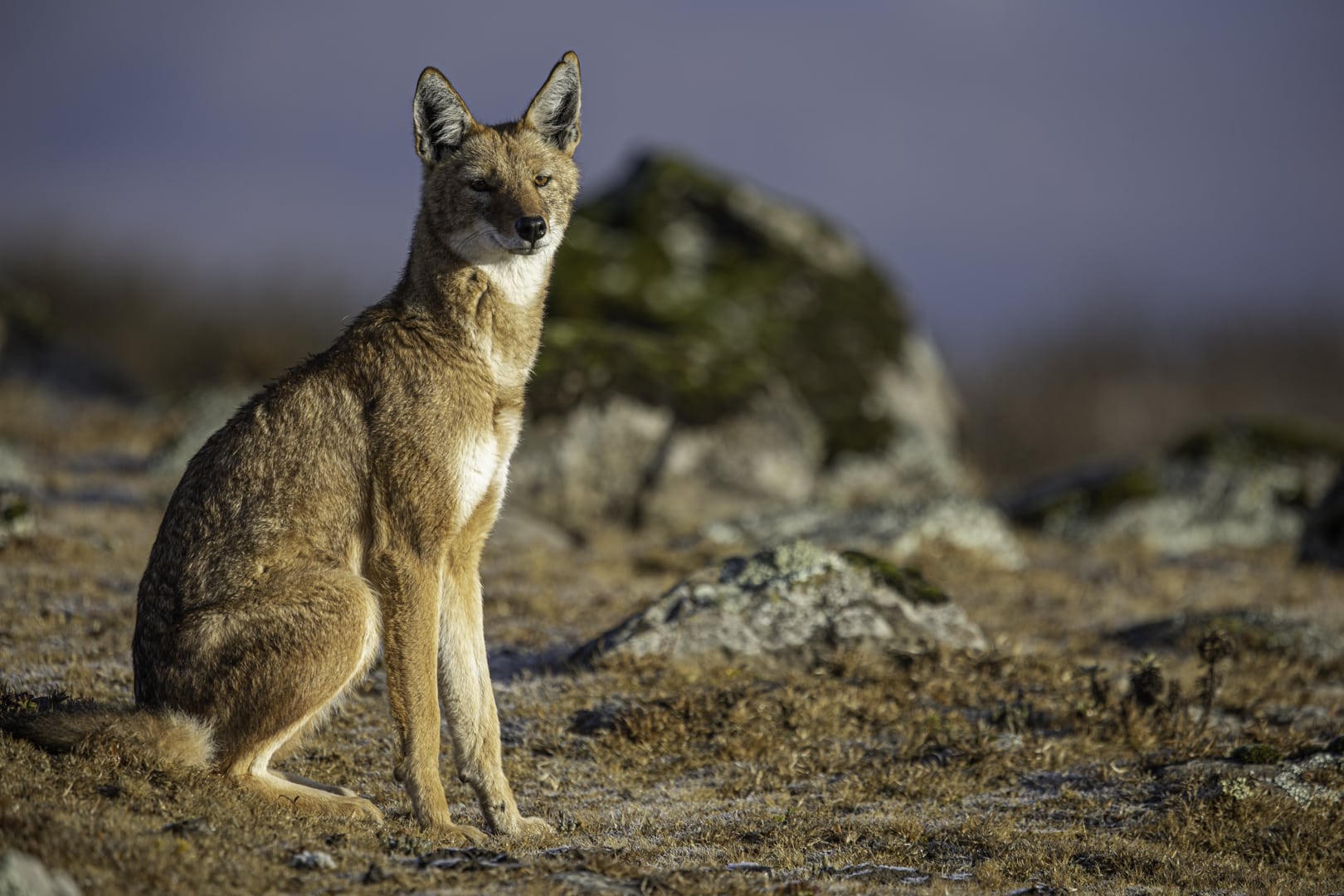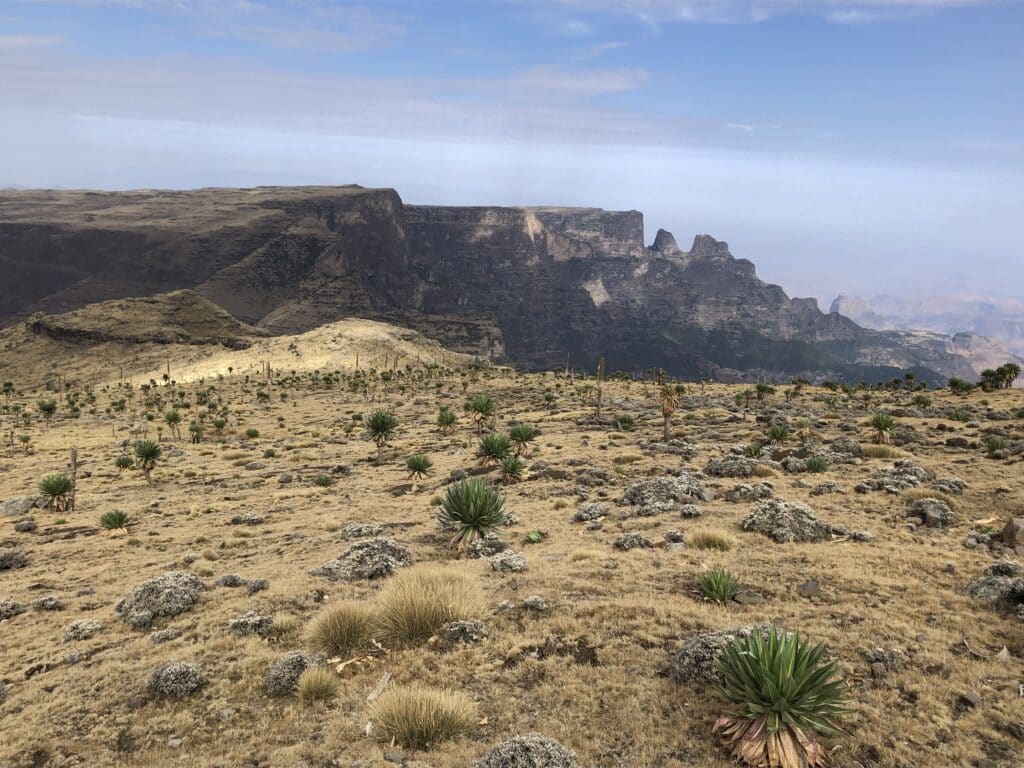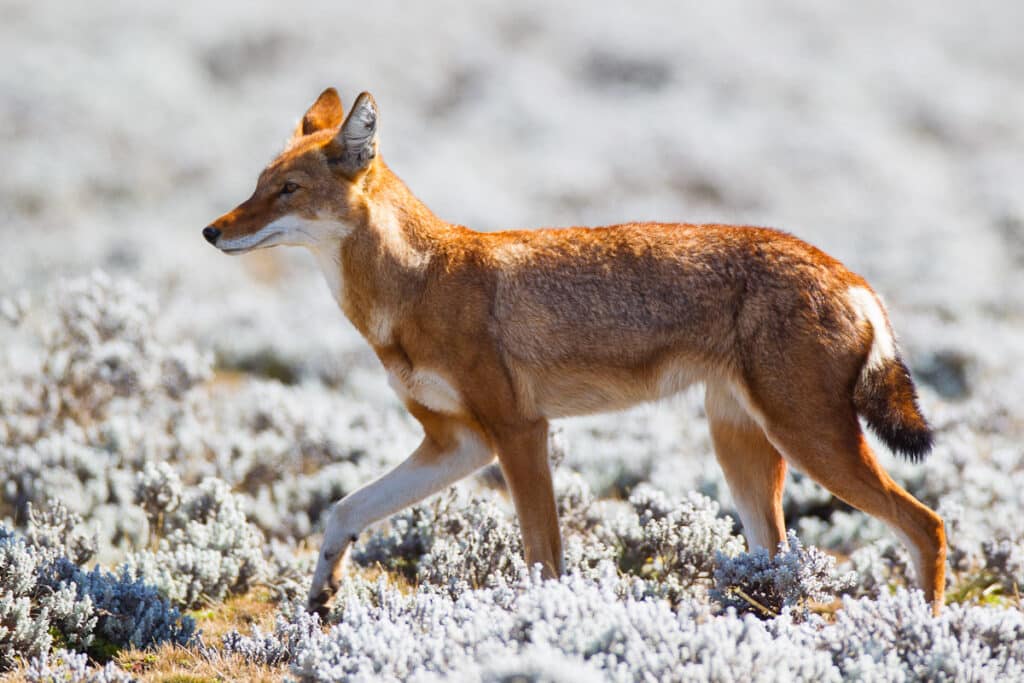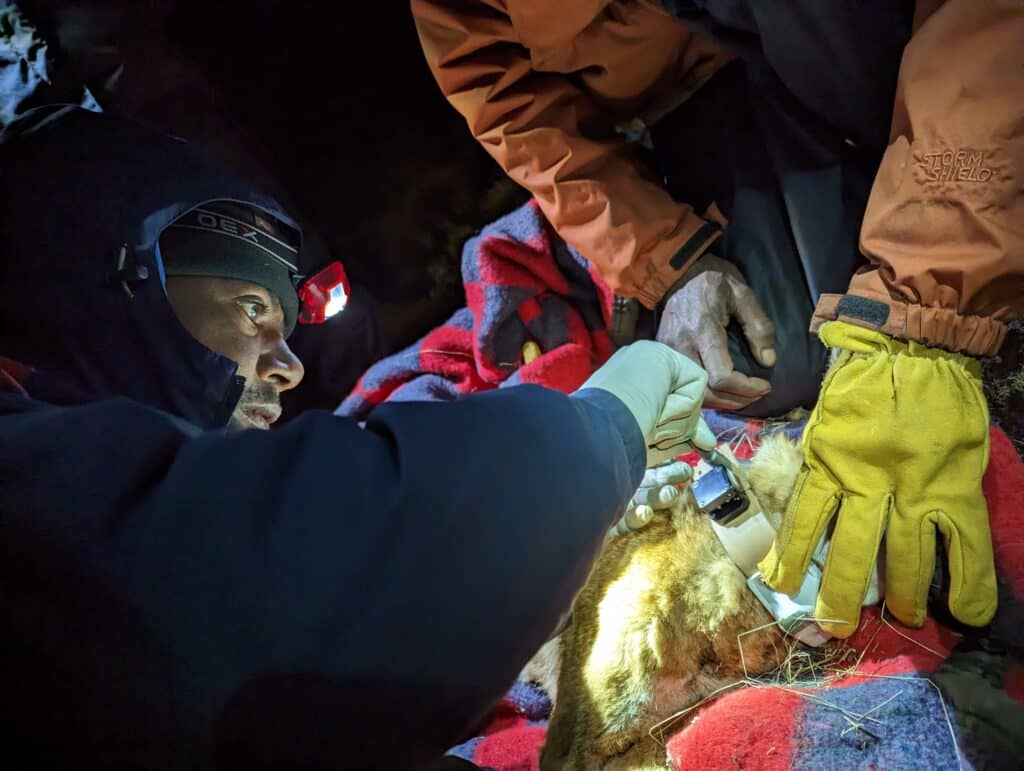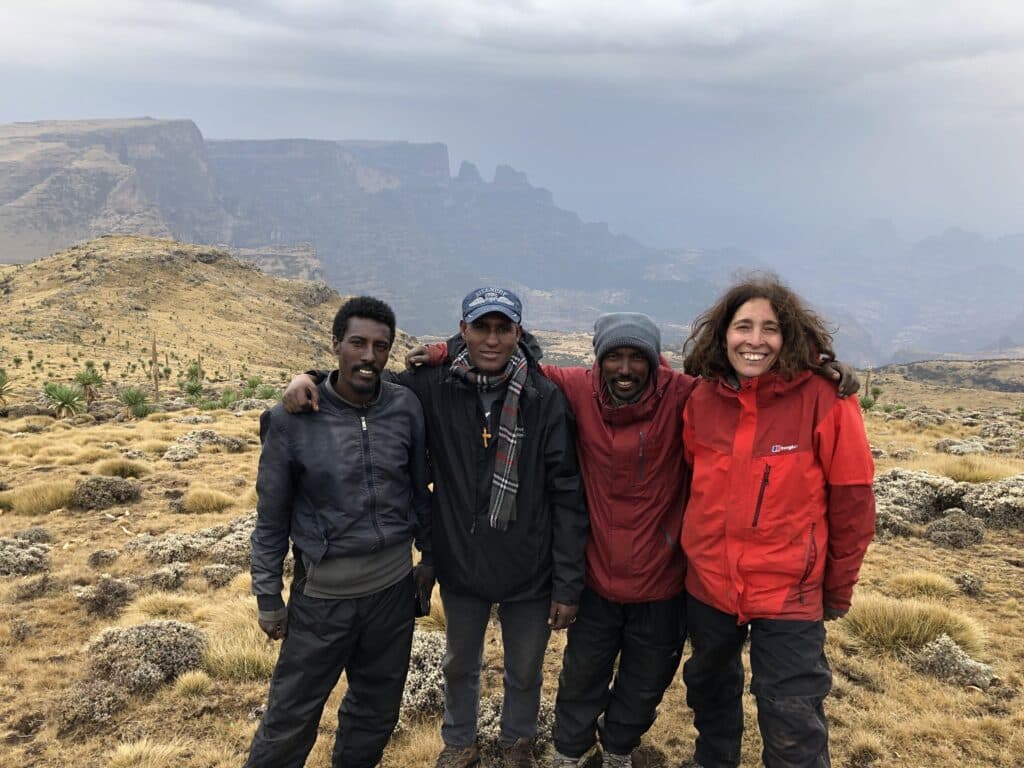Anxiously waiting for his colleague to return, Getachew Assefa sat in his tent under a blanket of stars above. The Ethiopian Wolf Conservation Program (EWCP) team camped along the steep, grass-covered cliffs of the Simien Mountains, a rugged landscape home to an important and elusive population of Ethiopian wolves. These wolves’ behavior was not fully understood by EWCP, so to fill critical knowledge gaps and inform conservation planning, a team led by Getachew and Dr. Jorgelina Marino, EWCP’s Simien Team Leader and Science Director, respectively, needed to catch and collar some of them. In the middle of the expedition’s second night, the buzz of a tent zipper interrupted Getachew’s vigil as his teammate brought thrilling news—for the first time ever, EWCP had captured a Simien wolf as part of a study.
Less than 500 wolves remain in the highlands of Ethiopia, with most located in the Bale Mountains. Only about 75 wolves live in the Simien Mountains, but that’s still enough to make them Earth’s second largest Ethiopian wolf population and crucial to maintaining the species’ genetic diversity. Recently, EWCP noticed the Simien wolves exhibiting unusual behavior, becoming more active during twilight instead of daytime and having significantly fewer pups than their Bale cousins. To determine if these wolves were distressed or facing some new danger caused by recent armed conflict in the region, Getachew and Jorgelina knew they had to investigate. But the Simien wolves are notoriously difficult to observe, so EWCP had to give it their all to find answers.
Getachew led the team up 13,000 ft. into the Simien Mountains for two weeks of intense trekking across wolf habitat. Each day, they hiked for hours to set rubber leghold traps, which safely catch the wolves without inflicting harm, and checked the traps every three hours, day and night. Sleep eluded them as they eagerly waited for someone to call out, “Wolf in trap!” EWCP needed to put a lightweight GPS collar on one wolf from each of the four Simien packs to monitor each pack’s movements. They caught a male on that second night, the first Simien wolf ever captured and collared for research. Then they moved camp to the next pack’s territory, repeating the process until they had collared a wolf from every pack.
When Jorgelina asked Getachew to name the first collared wolf, he chose Kidan—meaning “promise” in Amharic—to reflect this wolf’s potential to help EWCP better protect the Simien population. Data from the collars is already promising, indicating that the packs are hunting and socializing normally, but so far, they haven’t discovered any explanation for the wolves’ altered behavior. EWCP is confident that time will reveal why the Simien packs have developed such unique traits and what it means for their long-term survival. Ongoing satellite data over the coming months will help Getachew’s team track pack movements almost in real-time and reduce potential conflict with local herders.
Driving down the mountains after their successful operation, the team felt tremendously hopeful. With Getachew and his monitors continuing their study, EWCP will learn all they can about the Simien wolves to safeguard their future.
